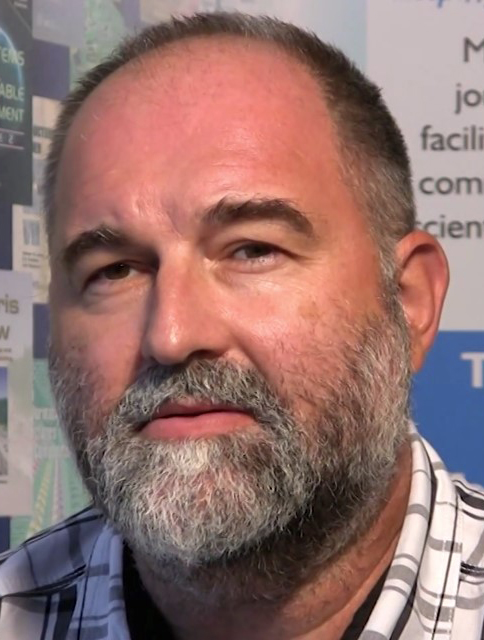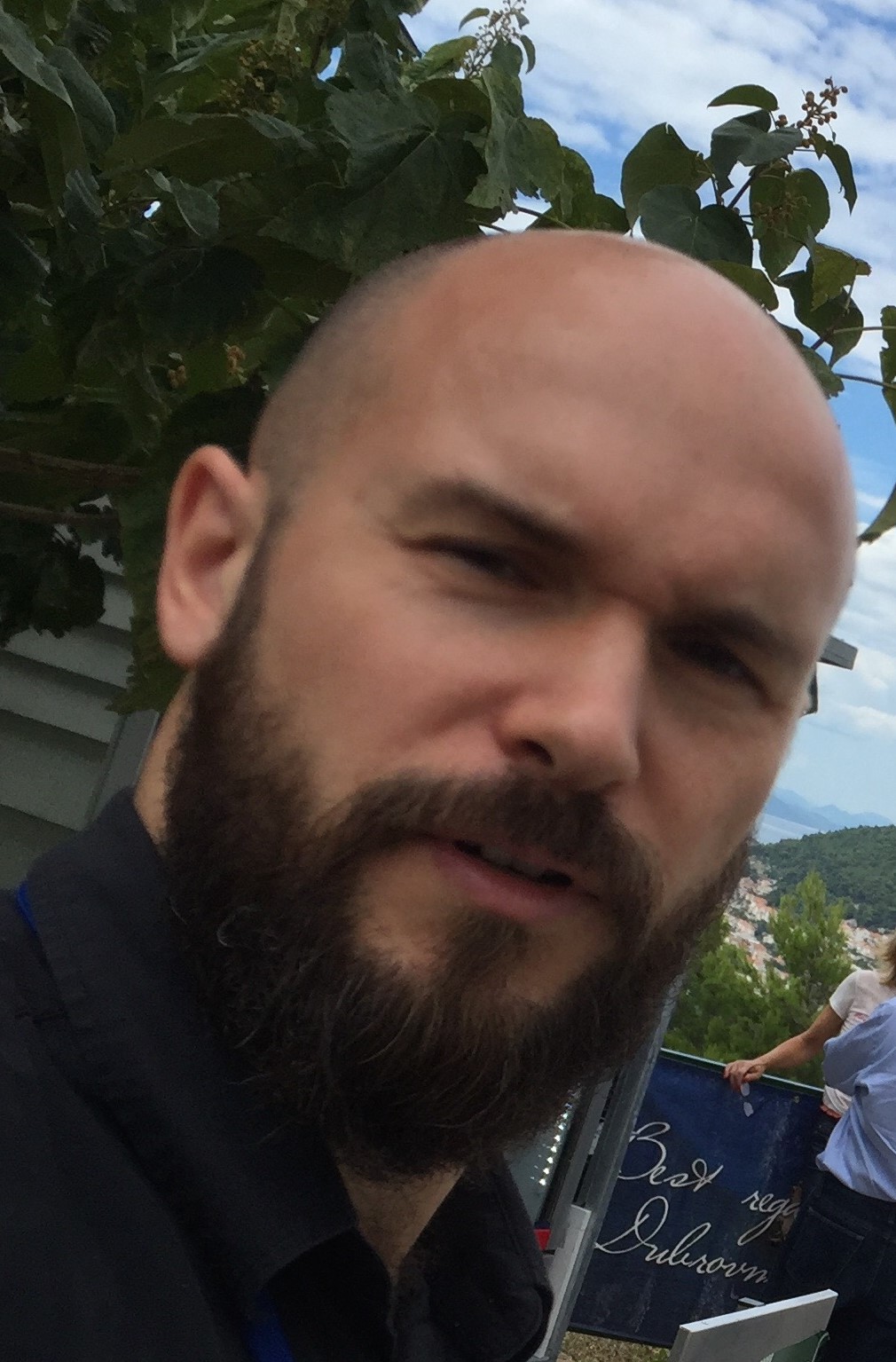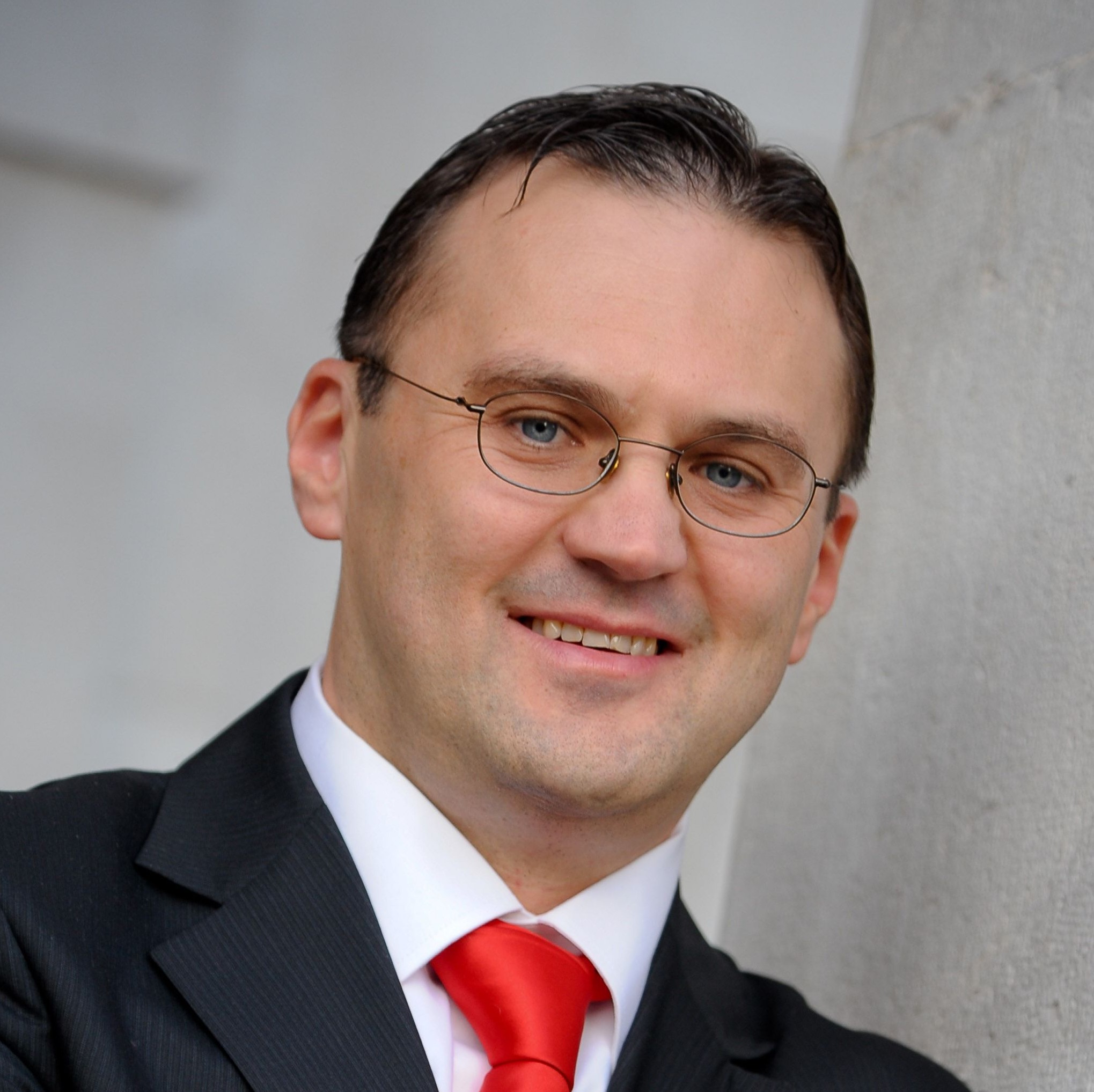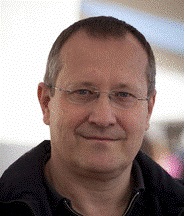Humans Exposure to Electromagnetic Fields
Dragan Poljak and Mario Cvetković, PhD
University of Split, Croatia
This Tutorial is mainly based on the book, D. Poljak, M.Cvetkovic, Human Interaction with Electromagnetic Fields; Computational Models in Dosimetry, Elsevier 2019, and on some recent journal papers.. Tutorial aims to cover several aspects of human interaction with non-ionizing electromagnetic fields (EMF) including not only the undesired exposure from artificial sources. but also the biomedical applications of electromagnetic fields. The tutorial deals with basic aspects of electromagnetic fields in environment, coupling mechanisms between humans and electromagnetic fields, established biological effects of electromagnetic fields from static to high-frequency range, international safety guidelines related to limiting human exposure to those fields, including relevant exposure limits and safety guidelines, electromagnetic-thermal dosimetry models and the related analytical/numerical solution methods. First, theoretical/experimental methods of incident field dosimetry for the assessment of external fields due to low frequency (LF) and high frequency (HF) sources are presented in detail. Illustrative examples include analysis of power lines, transformer substations, PLC systems, RFID antennas and radio base stations pertaining to 2G/3G/4G and 5G mobile communication systems. Then, the tutorial presents some electromagnetic-thermal dosimetry methods for the assessment of human exposure to low frequency (LF), high frequency (HF) and transient electromagnetic radiation featuring the use of integral/differential equation formulations and related numerical solution procedures (primarily based on the use of Boundary Element Method – BEM, and Finite Element method – FEM) for the calculation of induced current densities, internal fields, specific absorption rate (SAR), incident power density (IPD), transmitted power density (TPD) and specific absorption (SA). Also, for HF exposures the related temperature increase in tissues is of interest. In particular, for GHz frequency range, as far as 5G systems are concerned, a surface temperature elevation on the air-body interface is considered. Computational examples pertaining to various realistic exposure scenarios, such as; pregnant woman/foetus exposed to low frequency (LF) fields, the human eye, the human brain and the human head exposed to HF electromagnetic fields will be given. The obtained numerical results for induced current densities, internal fields, SAR, IPD, TPD and SA are compared against exposure limits proposed by recently issued ICNIRP 2020(International Commission on Non Ionizing Radiation Protection). This is followed by some examples of biomedical applications of electromagnetic fields, including the transcranial magnetic stimulation (TMS), transcranial electrical stimulation (TES), but also some electrotherapy and magnetotherapy techniques. Also, some illustrative computational examples pertaining to thermal modeling of certain ophthalmological procedures will be given. Finally, the last part of the Tutorial deals with the stochastic modeling of electromagnetic fields. Namely, the input parameters of models used in bioelectromagnetism and electromagnetic dosimetry suffer from inherent uncertainty. The values of body tissue parameters such as permittivity and the electrical conductivity vary significantly, depending on the age and gender, but also between healthy and ill individuals. Moreover, they are obtained under different measurements on ex vivo animal and human tissues, and show large variations from their averages. When used in a computational model, these average values result in approximation of the realistic scenario. The models used in bioelectromagnetics and numerical dosimetry are computationally rather demanding as they represent tremendously complex physical phenomena. Despite the progress in high-performance calculation, uncertainty quantification (UQ) based on traditional Monte Carlo method is still an enormous burden regarding computational cost. Therefore, alternative methods such as generalized polynomial chaos and stochastic collocation have become of interest to many researchers in this research area. In this tutorial, an outline of the application of stochastic collocation (SC) together with some illustrative examples are given.
 Dragan Poljak was born on 10 October 1965. He received his BSc in 1990, his MSc in 1994 and PhD in electrical engineering in 1996 from the University of Split, Croatia. He is the Full Professor at Department of Electronics, Faculty of electrical engineering, mechanical engineering and naval architecture at the University of Split, and he is also Adjunct Professor at Wessex Institute of Technology. His research interests include frequency and time domain computational methods in electromagnetics, particularly in the numerical modelling of wire antenna structures, and numerical modelling applied to environmental aspects of electromagnetic fields. To date Professor Poljak has published nearly 200 journal and conference papers in the area of computational electromagnetics, seven authored books and one edited book, by WIT Press, Southampton-Boston, and one book by Wiley, New Jersey. Professor Poljak is a member of IEEE, a member of the Editorial Board of the journal Engineering Analysis with Boundary Elements, and co-chairman of many WIT International Conferences. He is also editor of the WIT Press Series Advances in Electrical Engineering and Electromagnetics. He was awarded by several prizes for his carrier achievements, such as National Prize for Science (2004), Croatian section of IEEE annual Award (2016).
In 2011 professor Poljak became a member of WIT Board of Directors. From 2011 to 2015 he was the Vice-dean for research at the Faculty of electrical engineering, mechanical engineering and naval architecture. In June 2013 professor Poljak became a member of the board of the Croatian Science Foundation.
He is currently involved in one COST project, ITER physics EUROfusion collaboration and one national center for excellence in research for technical sciences.
He served a co-chair of Working Group 2 of IEEE/International Committee on Electromagnetic Safety (ICES) Technical Committee 95 SC6 EMF Dosimetry Modeling.
In 2019 Prof Poljak was included in numerous activities dealing with human exposure to electromagnetic fields.
In the first half of the year a new edition of the chapter; Poljak, D., 2019. “Electromagnetic Fields: Environmental Exposure. In: Nriagu, J. (Ed.), Encyclopedia of Environmental Health. Elsevier, vol. 2, pp. 287–299. https://dx.doi.org/10.1016/B978-0-12-409548-9.02005-4, © 2019 Elsevier B.V. was published.
In June 2019 Prof. Poljak, together with M.Cvetkovic, published a book entitled: Human Interaction with Electromagnetic Fields; Computational Models in Dosimetry, by Elsevier.
In July 2019 Dragan Poljak received the Technical Achievement Award of the IEEE EMC society Technical Achievement Award for contributions to computational dosimetry for human exposure to electromagnetic fields.
In December 2019 Prof Poljak lectured at PhD School 5G International PhD School 2019.
From the beginning of 2019 he has been participating intensive activities in IEEE/ICES TC95 Subcommittee 6 EMF Dosimetry Modeling; WG5: Definition of Incident Power Density related to dosimetry of 5G radiation.
Dragan Poljak was born on 10 October 1965. He received his BSc in 1990, his MSc in 1994 and PhD in electrical engineering in 1996 from the University of Split, Croatia. He is the Full Professor at Department of Electronics, Faculty of electrical engineering, mechanical engineering and naval architecture at the University of Split, and he is also Adjunct Professor at Wessex Institute of Technology. His research interests include frequency and time domain computational methods in electromagnetics, particularly in the numerical modelling of wire antenna structures, and numerical modelling applied to environmental aspects of electromagnetic fields. To date Professor Poljak has published nearly 200 journal and conference papers in the area of computational electromagnetics, seven authored books and one edited book, by WIT Press, Southampton-Boston, and one book by Wiley, New Jersey. Professor Poljak is a member of IEEE, a member of the Editorial Board of the journal Engineering Analysis with Boundary Elements, and co-chairman of many WIT International Conferences. He is also editor of the WIT Press Series Advances in Electrical Engineering and Electromagnetics. He was awarded by several prizes for his carrier achievements, such as National Prize for Science (2004), Croatian section of IEEE annual Award (2016).
In 2011 professor Poljak became a member of WIT Board of Directors. From 2011 to 2015 he was the Vice-dean for research at the Faculty of electrical engineering, mechanical engineering and naval architecture. In June 2013 professor Poljak became a member of the board of the Croatian Science Foundation.
He is currently involved in one COST project, ITER physics EUROfusion collaboration and one national center for excellence in research for technical sciences.
He served a co-chair of Working Group 2 of IEEE/International Committee on Electromagnetic Safety (ICES) Technical Committee 95 SC6 EMF Dosimetry Modeling.
In 2019 Prof Poljak was included in numerous activities dealing with human exposure to electromagnetic fields.
In the first half of the year a new edition of the chapter; Poljak, D., 2019. “Electromagnetic Fields: Environmental Exposure. In: Nriagu, J. (Ed.), Encyclopedia of Environmental Health. Elsevier, vol. 2, pp. 287–299. https://dx.doi.org/10.1016/B978-0-12-409548-9.02005-4, © 2019 Elsevier B.V. was published.
In June 2019 Prof. Poljak, together with M.Cvetkovic, published a book entitled: Human Interaction with Electromagnetic Fields; Computational Models in Dosimetry, by Elsevier.
In July 2019 Dragan Poljak received the Technical Achievement Award of the IEEE EMC society Technical Achievement Award for contributions to computational dosimetry for human exposure to electromagnetic fields.
In December 2019 Prof Poljak lectured at PhD School 5G International PhD School 2019.
From the beginning of 2019 he has been participating intensive activities in IEEE/ICES TC95 Subcommittee 6 EMF Dosimetry Modeling; WG5: Definition of Incident Power Density related to dosimetry of 5G radiation.
 Mario Cvetković
received his BSc in electrical engineering from the University of Split, Croatia in 2005. In 2009 he obtained MPhil degree from the Wessex Institute of Technology, University of Wales, UK. In December 2013 he received PhD from University of Split, Croatia. He is assistant professor at the Faculty of electrical engineering, mechanical engineering and naval architecture (FESB), University of Split were he teaches fundamentals of electrical engineering course. In 2010, he held a seminar to graduate and postgraduate students at the Technical University of Ilmenau, Germany, and in 2014 and 2018 he held seminars to PhD students on the numerical methods in engineering at the Malardalen University, Vasteras, Sweden. He is a recipient of the “Best Student Paper Award”, awarded at the 16th edition of the international conference SoftCOM 2008. At the Scientific Novices Seminar held in 2012, he was awarded with the recognition for his previous scientific achievements. To date he has published more than 50 journal and conference papers and several book chapters (including those for CRC Press and Springer). He is a member of the IEEE/International Committee on Electromagnetic Safety (ICES) Technical Committee 95 SC6 EMF Dosimetry Modeling.
Mario Cvetković
received his BSc in electrical engineering from the University of Split, Croatia in 2005. In 2009 he obtained MPhil degree from the Wessex Institute of Technology, University of Wales, UK. In December 2013 he received PhD from University of Split, Croatia. He is assistant professor at the Faculty of electrical engineering, mechanical engineering and naval architecture (FESB), University of Split were he teaches fundamentals of electrical engineering course. In 2010, he held a seminar to graduate and postgraduate students at the Technical University of Ilmenau, Germany, and in 2014 and 2018 he held seminars to PhD students on the numerical methods in engineering at the Malardalen University, Vasteras, Sweden. He is a recipient of the “Best Student Paper Award”, awarded at the 16th edition of the international conference SoftCOM 2008. At the Scientific Novices Seminar held in 2012, he was awarded with the recognition for his previous scientific achievements. To date he has published more than 50 journal and conference papers and several book chapters (including those for CRC Press and Springer). He is a member of the IEEE/International Committee on Electromagnetic Safety (ICES) Technical Committee 95 SC6 EMF Dosimetry Modeling.
A Review of Material Characterization Techniques with an Emphasis on a Microstrip Ring-resonator Method
Miroslav Joler, PhD
University of Rijeka, Croatia
Material characterization plays an important role in modern research and design. To properly design electronic/electromagnetic circuits, it is essential to know electromagnetic (EM) properties of given materials. In a broader sense, knowing EM properties is not only vital for the circuit design, but also for the analyses of other products, such as food, chemicals, body tissue, fabrics etc. Capability to determine properties of the chosen material is instrumental when using non-standard materials that are typically not accompanied by a data sheet listing electromagnetic properties of the material. The first part of this tutorial will contain an review of multiple methods that have been established to enable characterization of EM properties of materials. Presented methods will be described in terms of their measurement principle and apparatus, measurement conditions, method applicability with benefits, and limitations. In the second part, emphasis will be put on the microstrip-based ring-resonator method. The resonator design and various measurement approaches will be discussed through examples, with their sensibilities and impact on the result. The results of some analytical and numerical models will be compared to results of the respective measurements, discussing aspects that entail measurement and computational uncertainties. The tutorial will conclude with a possible expansion of the method applicability range.
 Miroslav Joler received his B.S. degree in electrical engineering from the University of Zagreb, Croatia, in 1996, and his M.S. and Ph.D. degrees in electrical engineering from the University of New Mexico, Albuquerque, NM, USA, in 2001 and 2006, respectively. In 2006, he was a postdoctoral research associate with Portland State University, Portland, OR, USA. In 2007, he joined the University of Rijeka, Croatia, where he has founded a Wireless Communications Lab, and served as Chair of Computer Engineering Department, amongst other duties. His industry experience includes a position of an RF engineer with Croatian Radio and Television from 1996 to 1999. He has published in prominent scientific journals and served as session (co)chair, and technical program committee member at international conferences. He is an Editorial Board Member of two international scientific publishers and an Associate Editor of an international scientific journal. In 2017, he was elected to Associate level of Croatian Academy of Engineering. His current research interests include development of smart clothing, wearable and reconfigurable circuits, biomedical applications of electromagnetics, and wireless power transfer.
Miroslav Joler received his B.S. degree in electrical engineering from the University of Zagreb, Croatia, in 1996, and his M.S. and Ph.D. degrees in electrical engineering from the University of New Mexico, Albuquerque, NM, USA, in 2001 and 2006, respectively. In 2006, he was a postdoctoral research associate with Portland State University, Portland, OR, USA. In 2007, he joined the University of Rijeka, Croatia, where he has founded a Wireless Communications Lab, and served as Chair of Computer Engineering Department, amongst other duties. His industry experience includes a position of an RF engineer with Croatian Radio and Television from 1996 to 1999. He has published in prominent scientific journals and served as session (co)chair, and technical program committee member at international conferences. He is an Editorial Board Member of two international scientific publishers and an Associate Editor of an international scientific journal. In 2017, he was elected to Associate level of Croatian Academy of Engineering. His current research interests include development of smart clothing, wearable and reconfigurable circuits, biomedical applications of electromagnetics, and wireless power transfer.
Data Clustering in Julia
Ivan Slapničar, PhD
University of Split, Croatia
The lecture materials are reactive Pluto notebooks in Julia language. Basic linear algebra knowledge is assumed. The notebooks are available at https://ivanslapnicar.github.io/Data-Clustering-in-Julia.jl/. The tutorial consists of two blocks. In the first block, short introduction to Julia and its eco system will be given, followed by the lecture on k-means algorithm for data clustering and package Clustering.jl. The second block consists of lectures on spectral graph bi-partitioning, spectral graph k-partitioning, and spectral partitioning of bipartite graphs, followed by an application to clustering of textual data using terms-document matrix and packages TextAnalysis.jl and Languages.jl.
 Ivan Slapničar received his BSc in 1984, his MSc in 1988 in Mathematics from the University of Zagreb, Croatia, and PhD (dr. rer. nat.) in Mathematics in 1992 from the Fernuniversität Hagen, Germany. He is Professor and Head of the Chair for Mathematics at the Faculty of Electrical Engineering, Mechanical Engineering and Naval Architecture at the University of Split. His research interests include linear algebra, numerical linear algebra and applications. Professor Slapničar was Visiting Professor at the Utah State University in 2001/02, Visiting Researcher at TU Berlin with the FP7 People “Marie Curie” Intra-European Fellowship in 2009/10, and Fulbright-Schuman International Educator/Lecturer at MIT in 2014, where he worked closely with the Julia group. In 2016 he taught GIAN Course “Modern Applications of Numerical Linear Algebra” at IIT Indore, India, which was entirely prepared in Julia. To date Professor Slapničar has published more than 20 journal papers and was and is PI in several national scientific grants.
Ivan Slapničar received his BSc in 1984, his MSc in 1988 in Mathematics from the University of Zagreb, Croatia, and PhD (dr. rer. nat.) in Mathematics in 1992 from the Fernuniversität Hagen, Germany. He is Professor and Head of the Chair for Mathematics at the Faculty of Electrical Engineering, Mechanical Engineering and Naval Architecture at the University of Split. His research interests include linear algebra, numerical linear algebra and applications. Professor Slapničar was Visiting Professor at the Utah State University in 2001/02, Visiting Researcher at TU Berlin with the FP7 People “Marie Curie” Intra-European Fellowship in 2009/10, and Fulbright-Schuman International Educator/Lecturer at MIT in 2014, where he worked closely with the Julia group. In 2016 he taught GIAN Course “Modern Applications of Numerical Linear Algebra” at IIT Indore, India, which was entirely prepared in Julia. To date Professor Slapničar has published more than 20 journal papers and was and is PI in several national scientific grants.
